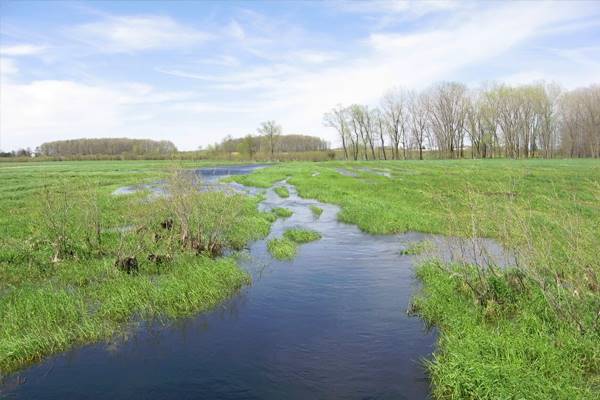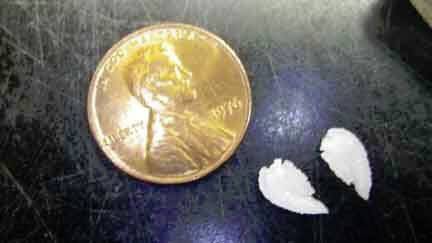Pike Study Finds No Homing Ability; Good For Green Bay Restoration
A new study shows that when Green Bay’s northern pike get the signal to swim upstream and spawn, the adult fish don’t seek out the same sites where they hatched out as juveniles. That’s good news for ongoing plans to bolster the species in this area of Lake Michigan.
While some migratory fish like salmon home in on the same streams where they were born, that doesn’t appear to be the case with pike. That means that new pike spawning habitats created through restoration efforts should attract some of the toothy predators that pass by on their journey upstream from the bay.
“If the habitat is successful and it’s suitable, the pike will find it and use it,” said Dan Oele, lead author of the study and a research scientist with the Wisconsin DNR. He conducted the research as part of his master’s degree work at the University of Wisconsin’s Center for Limnology.
Extensive wetland loss around Green Bay has hurt natural reproduction for pike in that part of Lake Michigan. Fish management programs like the DNR are pursuing a goal of boosting pike numbers and sizes there through acquiring low-lying coastal land where restored wetlands can benefit pike and migratory birds like ducks.
“They’re already investing lots and lots of money in property and property development for northern pike,” Oele said. “And one of the big questions is how beneficial is this to northern pike populations?”

A flooded stream is ideal pike habitat, providing cover and substrate for adults to spawn on and eggs to hatch. (Credit: Dan Oele)
But before this study, it wasn’t clear that pike would actually use the new wetlands for spawning. If pike preferred to return to the systems where they were born, new wetlands would have to be seeded with juvenile that could “imprint” on the habitat and return as adults.
Past studies have only anecdotally addressed whether northern pike have that homing ability, and the conclusions have been mixed. To come up with an answer based on hard data, Oele and his colleagues turned to the ear bones of pike collected in upstream pike spawning grounds throughout the Green Bay watershed.
The ear bones, called otoliths, pick up a unique chemical signature defined by the makeup of the water where the fish live. The bones work something like tree rings, accumulating layers as the fish grows.
For this study, the researchers collected adult and juvenile pike from spawning habitats around Green Bay. The juveniles were born in these habitats, while the adults had recently migrated from Lake Michigan. The researchers compared the chemical signatures of the juvenile ear bones with the signatures at the center of the adults’ ear bones, which is still tied to the environment where the adult lived after it hatched.

Pike otoliths. (Credit: Dan Oele)
If the researchers found that a juvenile otolith looked chemically similar to the center of an adult otolith collected at the same site, the adult pike was likely born there and had returned there after homing in on the location as a migrating adult ready to spawn. But that wasn’t the case. The adult and juvenile ear bones didn’t look the same, meaning that the adult was born somewhere else and had chosen its spawning location on some other criteria.
Their results also show the importance of stream connectivity to the pike life cycle. A wetland system in the headwaters of the Pensaukee River, more than 20 miles away from its mouth at Green Bay, produced by far the most young pike of all the sites in the study.
“The most productive site was the farthest away from Lake Michigan. They can migrate long distances if connectivity is good, so those connections are important,” Oele said. “They just had hundreds and hundreds — maybe even thousands — of young-of-year coming out at all different times of the spring.”
That was a relatively pristine agricultural watershed, the likes of which produced the “vast majority” of new pike that made it to Green Bay, Oele said. Urban systems produced much fewer young pike, though not for lack of trying on the part of the pike.
“We captured lots of adults in those systems, but we barely got enough young-of-year to do our sampling, let alone record recruits making it to Lake Michigan.”
That suggests that urban watersheds have the most potential when it comes to restoration gains. And when it comes to restoring wetlands for increased pike spawning habitat, the message is clear: If they build it, the pike will come.
The study was published in the Journal of Great Lakes Research.



0 comments